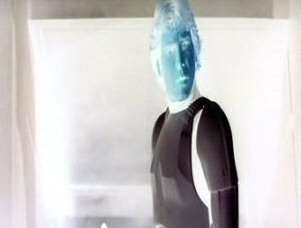Fang Zei said:
1828 x 1556 is the resolution at which the '04 scan was likely done. That's 2K for cinemascope, the format in which the OT (and, for what it's worth, TPM) was shot. Multiply 1828 by the 2x anamorphic squeeze of the lens and you've got 3656 x 1556, a 2.35:1 ratio. Or, if you'd like, simply cut the horizontal resolution in half and you've got 1828 x 778, also 2.35:1. Since the raw scan itself is only 1828 - less than even full 1920 HD res, nevermind 2048 - I guess some kind of magic is worked. Beats me.
Anyway, I had a couple paragraphs typed up about how the o-neg is probably still in its '97 conformation (despite how I'd love for danny_boy to be right), but this stupid ipad had to go and refresh the page after I opened up another tab to look up the exact numbers I just posted. Ugh, I gotta get a new laptop at some point. Anyway, to quickly summarize, Jim Ward said in '04 that they went back to the original negative for the dvd (the lowry master that was also used for the blu-ray). He said that the previous transfers were from IP and even specified that this meant "one generation off the negative." So, if the o-neg was still in its original 1977 conformation, it wouldn't have made much sense for them to scan it in and then meticulously "respecialize it." They might as well have just scanned the '97 IP if that had been the situation.
Hi Fang
If you could find the link where Ward says they used the o-neg for the scan that would be great.I have had a quick search myself but to avail so far.
This 2004 article that coincided with DVD release states explicitily that it was the special edition negative that was scanned(and not the 1977 o-neg)---therby implying that there is a physical distinction between the negatives of 1977 and 1997.
Interestingly, the negatives that were scanned were not those of the original releases but of the 1997 Special Edition reissues, because of their additional effects sequences (more of which are said to have been added in the DVD releases). Defects such as dirt and scratches from the original negative, then, had made their way through to the 1997 negative
Restoring the Star Wars Trilogy.
Article from: Videography | September 1, 2004 | Hurwitz, Matt
The above article also states that the scan was done at 1920 X 1080 resolution which obviously conforms to a 16:9 frame.....but this does not correlate to the geometry of the 35mm anamorphic imaging area.
The anamorphic 35mm framing of the special edition negative(or the 1977 negative) has a 12:9(commonly known as 4:3----yup...just like TV!) aspect ratio.
I'll do a quick pictorial representation:
Here is the original 1st generation anamorphic negative that was in the camera on the set.

It is converted into a 1st generation anamorphic interpositive(of very high quality)

This interpositive is then converted into a new internegative:

The above internegative is then converted into a theatrical interpositive to be distributed in cinemas.

Rough estimates say that an internegative can produce upto 500-1000 to maybe even 2000 prints before wearing out completely.
Now when the above 12:9 interpositive anamorphic frame goes through a projector equipped with the approprate lens----this 12:9 image is optically stretched to 21:9(cinemascope)
